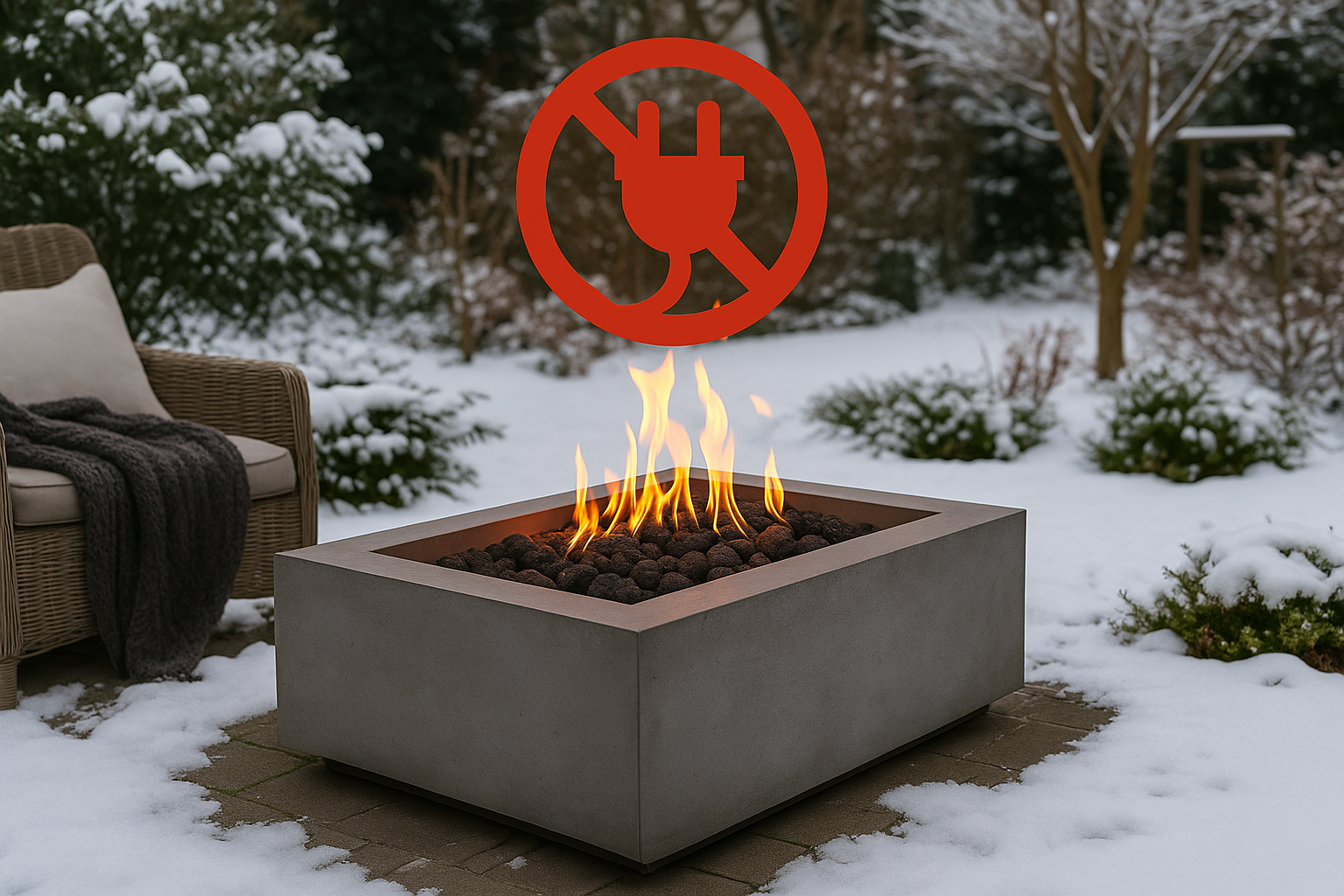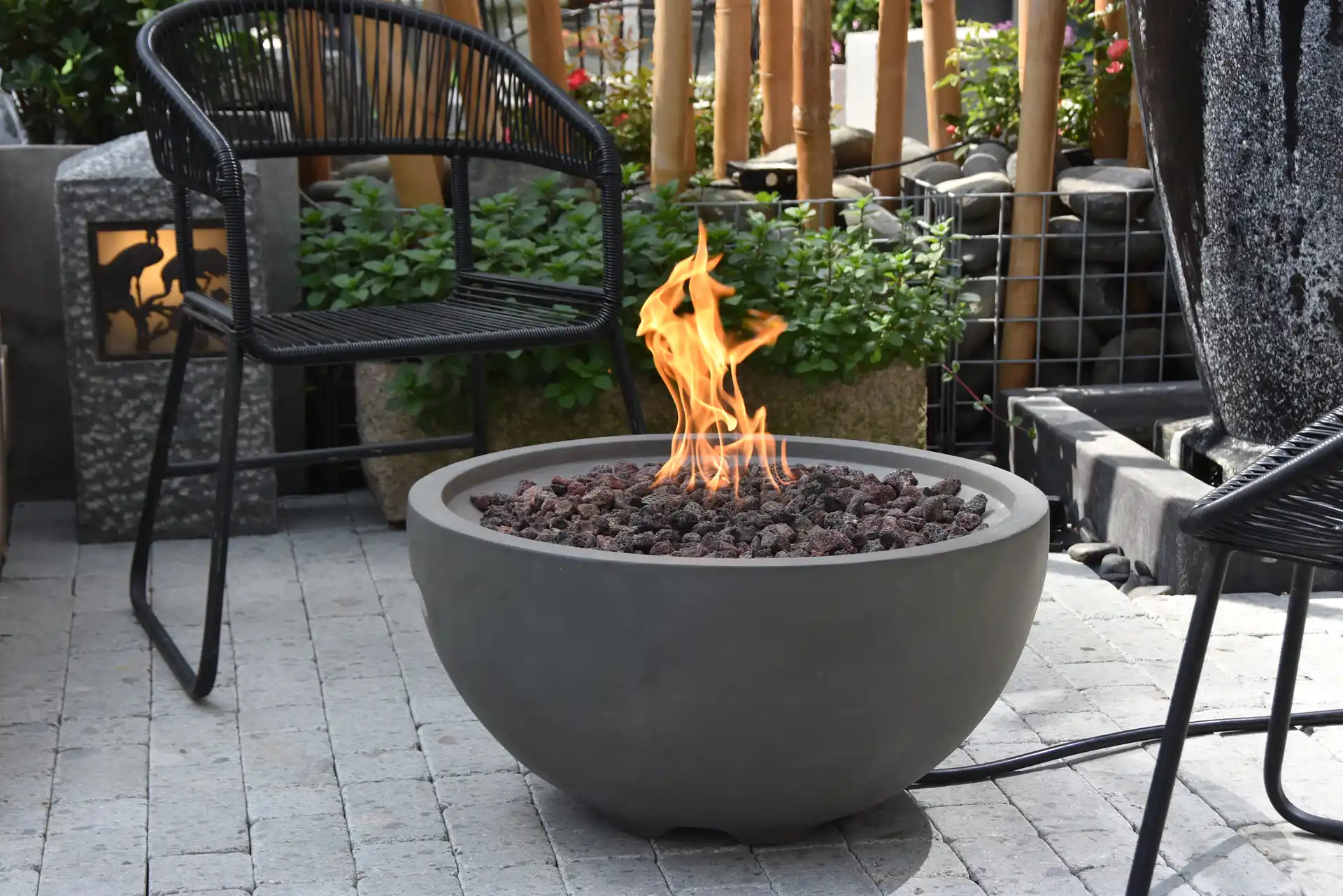Many people want to use their garden or patio in winter too – but quickly come up against a problem: there is no power connection outside. This is widespread in Europe and is often due to the design of older houses or for safety reasons. This article provides a scientifically sound and practical explanation of how to effectively heat a garden without electricity.
1 Why do many gardens and terraces have no electricity?
In many houses, outdoor areas were not originally planned for winter operation or electrical appliances. Therefore, a safe, permanently installed power source is often missing.
- Older houses or garden sheds do not have installed outdoor pipes
- External current poses a higher safety risk in damp conditions
- Outdoor extension cables are unsafe and unsightly
- As winter use increases, so does the need for alternative heat sources
This is why gas-powered or wood-fired appliances are becoming the most important solution for outdoor warmth in winter.
2 The most effective heating methods without electricity
2.1 Gas fireplaces / gas fire tables
Gas fireplaces currently offer the best overall performance of all non-electric heating solutions.
Propane has a very high calorific value and produces an even, controllable flame. The heat is mainly emitted as radiant heat – one of the most pleasant forms of heat transfer for the human body.
- Very high efficiency and fast heating
- Ready for immediate use, low wind sensitivity
- Adjustable BTU output
- Combines heat function with strong atmosphere
- Minimal maintenance effort
Recommended additions: Glass windbreak
2.2 Wood fire bowls / fire baskets
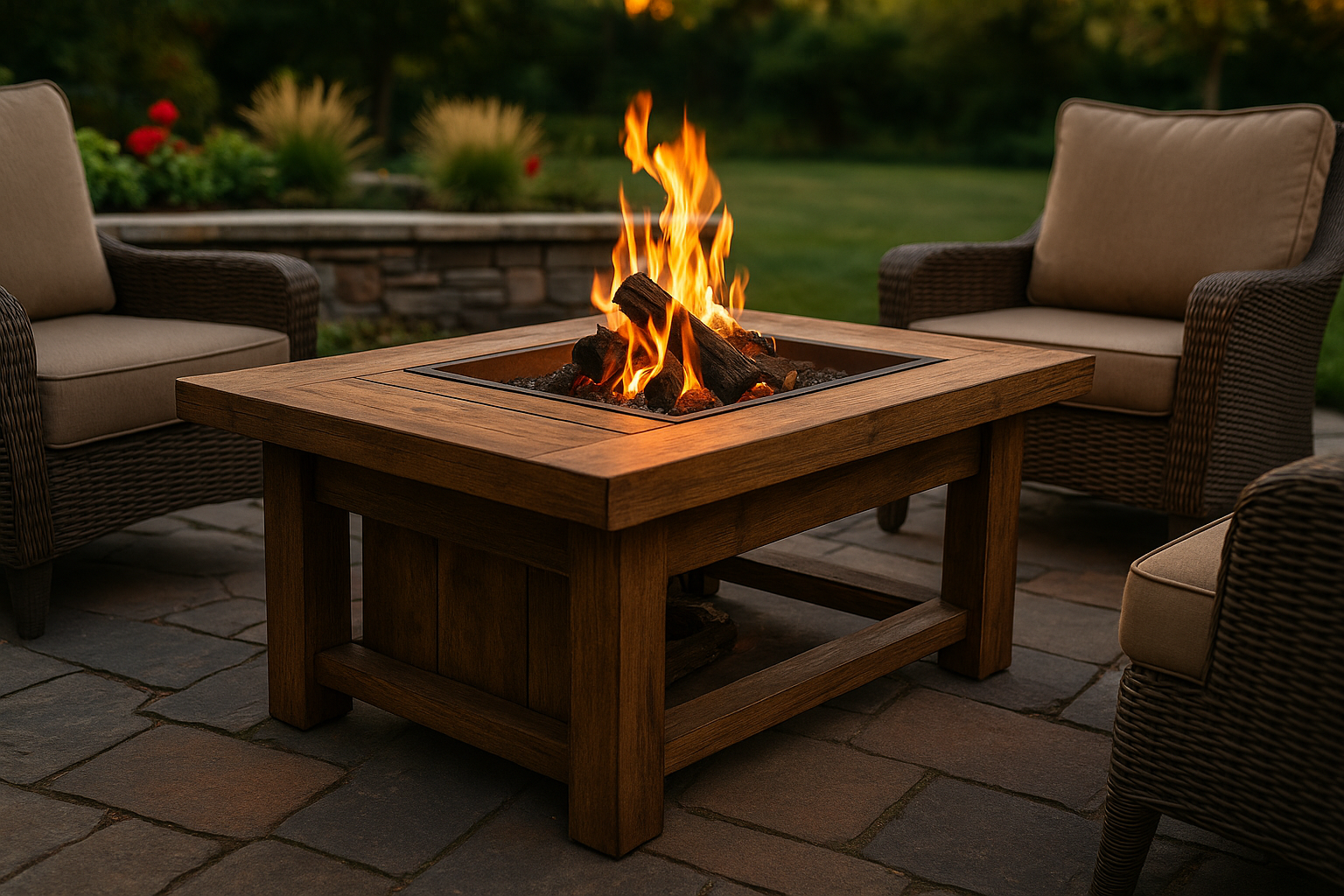
Wood fires offer the strongest visual effect and a traditional campfire feeling. The heat radiates far and wide, but is less controllable.
- Visually very strong and lively flames
- Low fuel costs
- Large radiation range
- Smoke development, depending on wind direction
- Regular cleaning of ash necessary
Ideal for natural gardens with plenty of space and good ventilation.
Comparison: Gas fireplace vs. wood fireplace
2.3 Gas-powered patio heaters (upright)
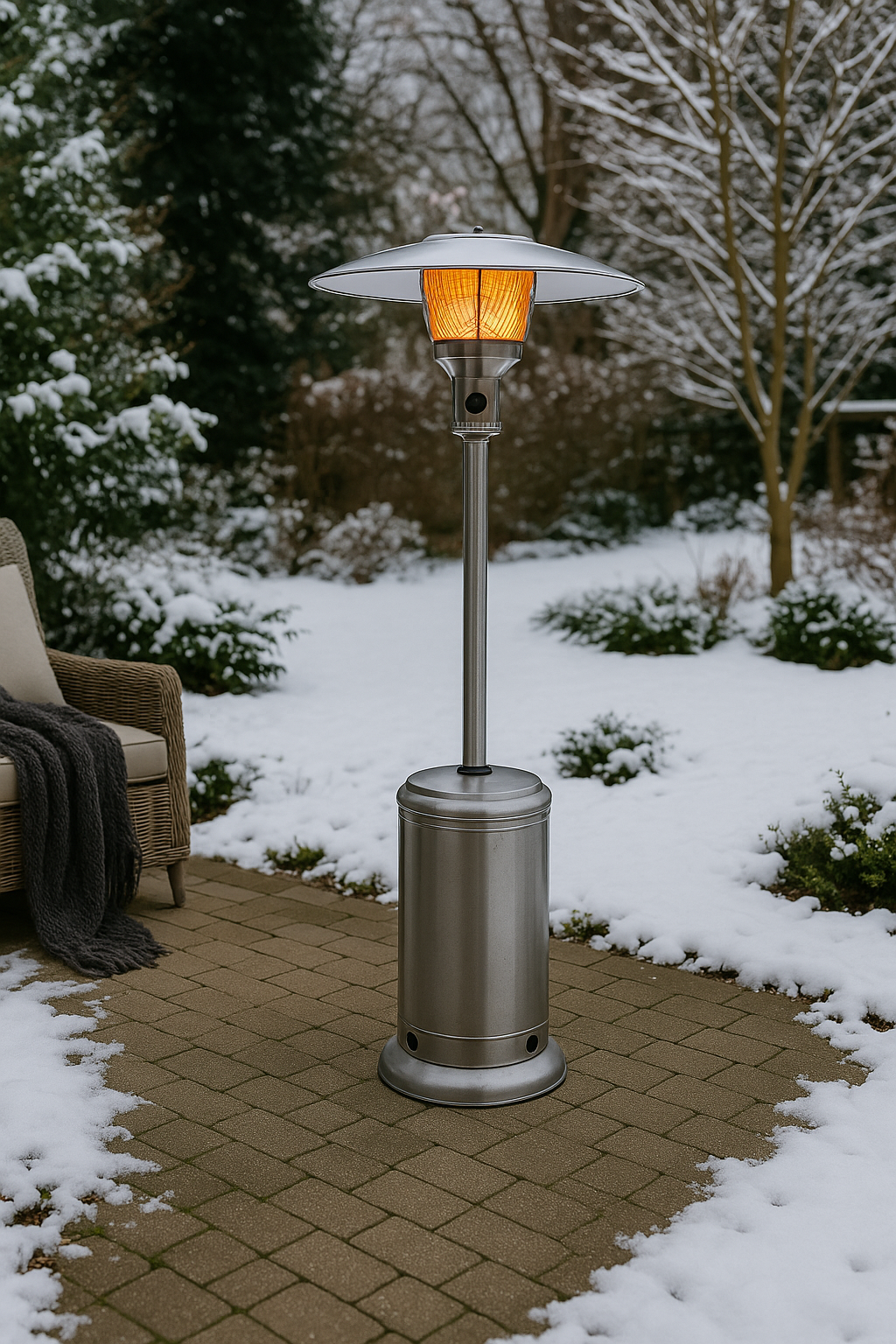
Upright radiant heaters are particularly popular on restaurant terraces, as they distribute heat over a large area due to their height.
- Very good area coverage
- Hardly sensitive to ground wind
- Ideal for outdoor dining areas
- Larger space requirement
- Higher gas consumption
You can find a detailed comparison in the article Fire pit vs. patio heater – comparison .
2.4 Pyramid and glass tube radiant heaters
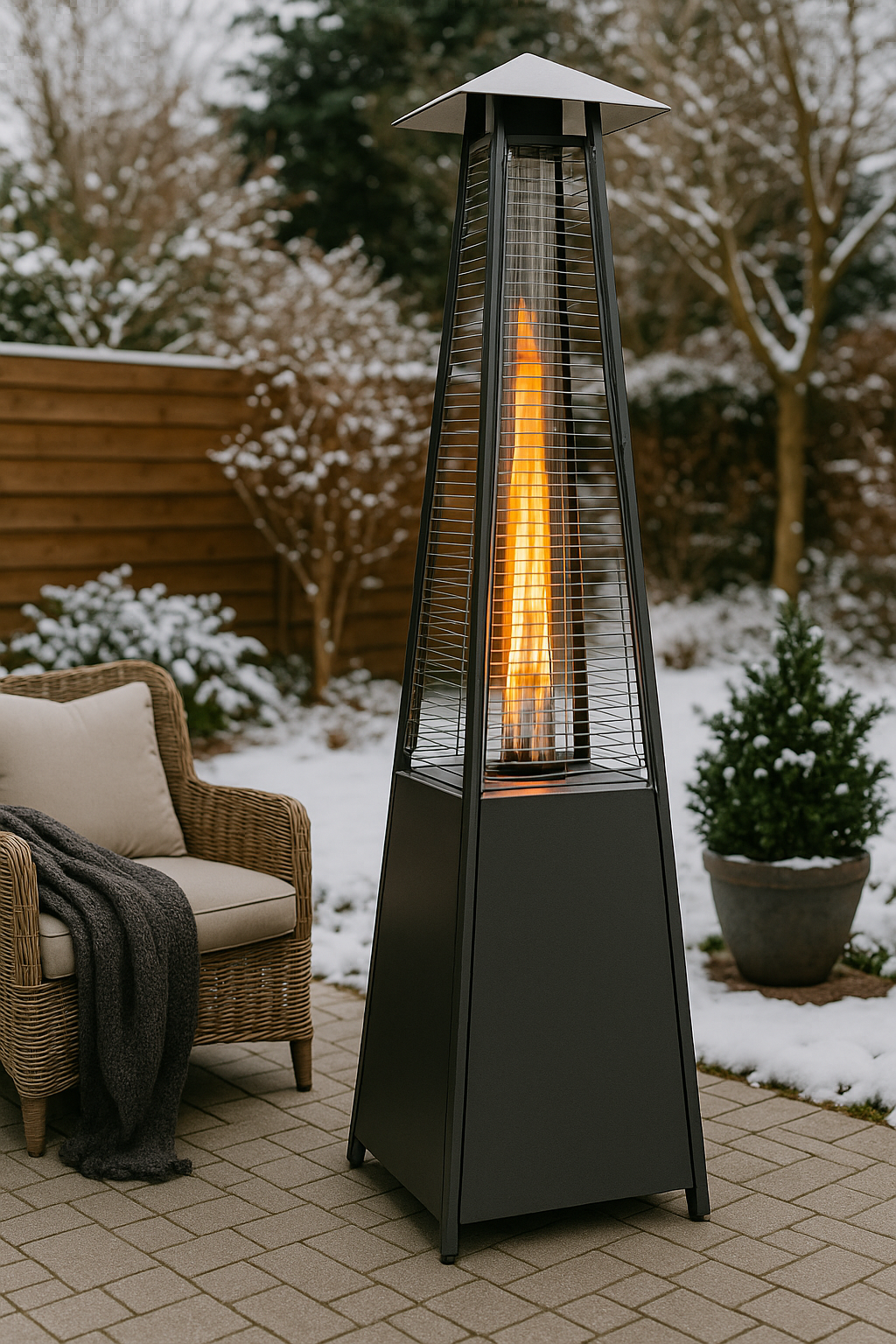
These appliances combine visible flames with reflective heat emission and create a decorative atmosphere.
- Ideal for balconies or terrace corners
- High decorative value
- Heat is more concentrated in certain areas
2.5 Heat retention measures
These methods do not generate any heat, but reduce the loss – and thus noticeably increase comfort:
- Glass or wooden wind protection against heat loss
- Use under semi-open structures such as pergolas
- Outdoor blankets, upholstery and carpets to reduce cold surfaces
3 Comparison: Gas vs. wood – which type of heating suits you?
The following comparison will help you make a quick decision:
| Criterion | Gas fireplace | Wood fireplace |
| Heat stability | Very stable, adjustable | Varies depending on wood & wind |
| Smoke development | Smoke free | Smoke present |
| Maintenance | Very low | Ash disposal necessary |
| Start time | Within seconds | Requires heating phase |
| Atmosphere | Modern & even | Natural & lively |
| Operating costs | Medium | Wood usually cheaper |
Conclusion: Gas is ideal for convenient, smoke-free and controlled heating. Wood is suitable for a natural experience with a strong play of flames.
4 Important safety instructions for heating in winter
- Maintain sufficient distance from wooden or WPC flooring
- Always store gas cylinders upright and away from heat sources
- Ensure adequate ventilation – avoid the risk of CO
- Do not operate fireplaces in completely enclosed spaces
- Observe wind direction to avoid flying sparks
- Observe local regulations for open fire sources
5 Best application scenarios
5.1 Garden area: large heat zone
- Large gas fireplace as the centerpiece
- Glass draft shield for better heat retention
- Warm white lighting for a wintry atmosphere
5.2 Balcony or small terrace: compact heating solution
- Small gas fireplace or compact fire table
- Two comfortable outdoor chairs and a small GF concrete side table
- Simple wind protection measures for better thermal sensation
5.3 Outdoor dining area: comfortable winter dining

- Standing gas radiant heater next to the dining table
- Side windbreak (wooden or glass wall)
- Additional table flames or candles for atmosphere
6 Gas fireplaces are the most balanced solution for gardens without electricity
Gas fireplaces combine efficiency, safety, comfort and atmosphere in one appliance – and function independently of electrical connections. With the right combination of fire source, windbreak, outdoor furniture and lighting, even a garden without electricity can become a warm, inviting winter living space.
This means that the outdoor area can be used all year round – not just in summer.
7 Frequently asked questions
Is it possible to heat a garden effectively in winter without electricity?
Yes, gas fireplaces, wood fire bowls or gas-powered radiant heaters can be used to heat a garden reliably and safely even without a power socket.
Which heating methods work best outdoors without electricity?
- Gas fires – Stable, adjustable heat, no smoke.
- Wood fire bowls – strong flames, natural atmosphere.
- Gas radiant heater – ideal for larger patios or dining areas.
Are gas fires safe in winter?
Yes – if used correctly. Good ventilation, a safe distance from flammable materials and an upright gas cylinder are important.
Which is better: gas or wood?
Gas provides stable, smoke-free and instant heat. Wood offers a
You can find a comprehensive comparison here: Gas fire pit vs. wood fire pit – comparison
How much gas does a gas fireplace consume?
The consumption depends on the BTU output output. A 7-11 kg propane cylinder lasts between 8 and 20 hours, depending on the flame level. Consumption can be significantly reduced with a draft shield. You can find more detailed information on the shelf life of a propane cylinder here.
Can you heat a small balcony without electricity?
- Compact gas fireplaces
- Glass tube radiant heater
- Small fire bowls (only in well-ventilated areas)
Additional wind protection noticeably improves the thermal performance.
What do I need to bear in mind when heating in winter?
- Always keep sufficient distance from wood, WPC and house walls
- Never operate the gas cylinder horizontally
- Only use in open or semi-open areas
- Observe wind direction to avoid flying sparks









